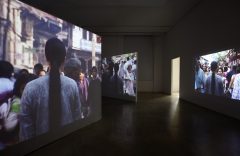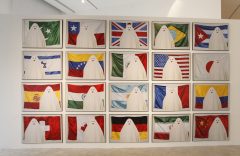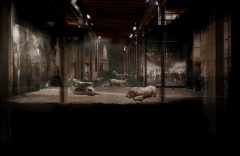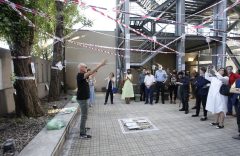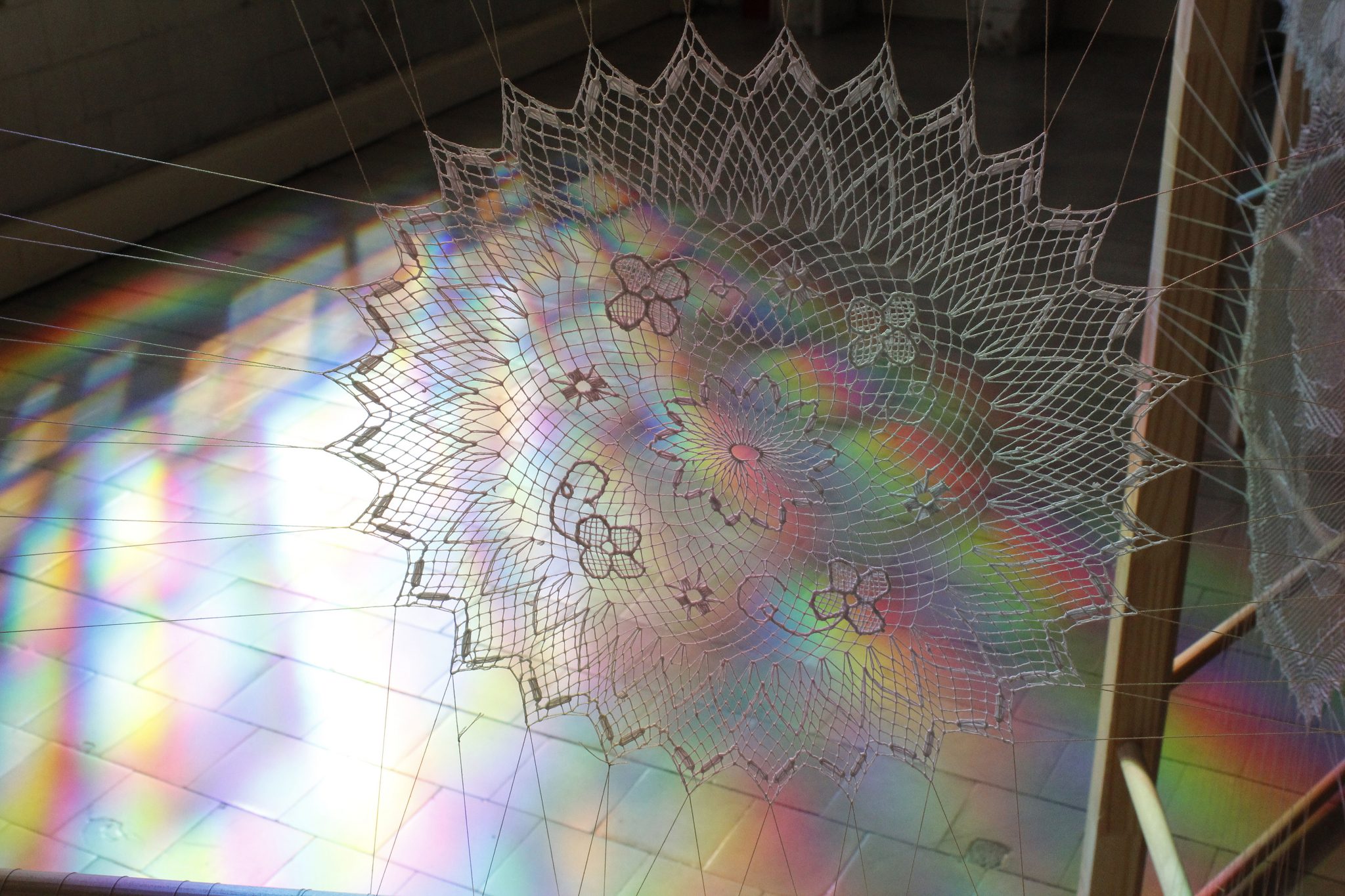
MUNTREF HOTEL DE IMMIGRANTES VENUE LAUNCHES TWO EXHIBITIONS WITH AN ECOFEMINIST APPROACH.
The exhibitions are Naming Rivers, Gargling and MUMORA: Our Garden of Randas, with the participation of curators and artists from Argentina and Switzerland. The openings are this Saturday March 12th at 12 noon.
As part of its 2022 programme, MUNTREF Centro de Arte Contemporáneo Hotel de Inmigrantes venue presents two exhibitions that address environmental issues from a feminist perspective. These proposals are opening this Saturday March 12th at 12 noon with free admission.
The project Naming Rivers, Gargling – in collaboration with the Swiss cultural foundation Pro Helvetia – is curated by Lucrecia Palacios from Argentina. It is a long-term performance featuring Argentine artist Jimena Croceri and her Swiss partner Sarina Scheidegger. The other performers that take part in this project are Igne Argento, Franziska Baumgartner, Guillermina Etkin, Agustín Genoud, Malena Ríos Itoiz, Carla Guida Johnson, Kambiz Shafei, Sofía Isabel Martínez, Yamila Méndez, Belara Michán, Ariana Moyano, Sebastián Rey and Barbara Togander.
The artists propose a performative and musical exercise that explores the inherent fluidity of our bodies and their connection with the seas, glaciers, rivers, and the bodies of others. Throughout the performance, the artists engage in different actions, both individual and collective, in which their bodies are linked to one another and to the water, producing movements and sounds that reveal our organic, identitary and political relationship with water. The show, which lasts for two hours, will take place every Saturday at 3:30pm. On the opening day, it will be held at 12:30pm and at 3:30pm.
A second hall houses individual projects by the artists in which they present their previous research in relation to the politics of water. Croceri offers a series of subtle drawings for which she immerses paper in the Riachuelo so that the murky water marks the paper and draws it as it seeps through. Scheidegger’s linoleums represent clepsydras or water clocks, an ancient way of measuring time through movement and the settling of fluids.
“The performance is a variation on the series of experiences that the artists have been carrying out in which they poetically reinterpret several of the ideas expressed in the book Bodies of Water by the Australian philosopher Astrida Neimanis. In it, Neimanis brings to mind that 80% of the composition of our body is water. Before we existed, this element was part of other organisms, of seas, of rainfall, and will return to them when it leaves us. Neimanis considers that this information positions humanity as part of nature. According to the philosopher, understanding this oceanic belonging enables us to reflect upon the environmental and social challenges that define our contemporaneity“, Palacios said with reference to the plot underlying the project.
Also on display is MUMORA: Our Garden of Randas, a collaborative work between the artist and researcher of the Universidad Nacional de Tucumán Alejandra Mizrahi and the “randeras” (weavers) of the village of El Cercado (Province of Tucumán): Silvia Amado, Anice Ariza, Magui Ariza, Margarita Ariza, Claudia Aybar, Elva Aybar, Gabriela Belmonte, María Ofelia Belmonte, Tatiana Belmonte, Norma Briseño, Ana Belén Costilla Ariza, Cristina Costilla, Marisel de los Ángeles Costilla, Mirta Costilla, María Laura González, Silvia González, María Magdalena Núñez, María Marcelina Núñez, Camila Nieva, Marta Dolores Núñez, Ely Pacheco, Giselle Paz, Romina Elizabeth Paz, Mayra Robles, Silvia Robles, Agustina Sosa, Elba Sosa, Marcela Sueldo, Anita Toledo and Yohana Torres. This proposal includes the participation of the anthropologist Lucila Galíndez and the historian Isabel Heredia, from the Cultural Action Department of the Cultural Agency of Tucumán.
As Mizrahi pointed out, Our Garden of Randas alludes to the place where this lace is still woven today: Tucumán, the Garden of the Republic.
“The flora in the territory is lush, colourful, and vibrant. Lace makers usually have wonderful blooming gardens, which they look after while simultaneously carrying out their weaving activities. For many of them, planting and tending to the flowers in their gardens is a personal task that fills them with joy and pride. Gardens and lace are related, since in many old pieces the lace makers created floral motifs on their meshes. Roses, calla lilies, daisies, busy lizzies, and a myriad of darned motifs can be found in the oldest lace works.
Today the weavers look back at their gardens and bring them to their pieces.”, said Mizrahi.
Within the framework of these openings, there will be a one-off workshop from 3:00 to 3:30pm, in which lace makers Mirta Costilla and Claudia Aybar will be showing the technique step by step.
The artist and researcher from Tucumán pointed out that MUMORA is the Mobile Museum of the Randa and that “it was born in El Cercado, a rural village in the area of Monteros, with the intention of bringing the textile work of the lace-makers to other audiences and geographies”.
Mizrahi added that this itinerant project has been exhibited on two occasions so far. The first show, called Lace Makers’ Autobiographies, was presented at the Museo Nacional de la Historia del Traje in Buenos Aires in 2020 and at the Museo Nacional de la Independencia in Tucumán in 2021. Lace Makers’ Hands Weaving Memories, the second exhibition, was on display at the Museo Municipal Sor Josefa Díaz y Clucellas in Santa Fe within the framework of BIENALSUR 2021.
In addition to these new exhibitions, MUNTREF Hotel de Inmigrantes venue will also host four other exhibitions that were part of the third edition of BIENALSUR: Between Us and the Others: TOGETHER APART, which features pieces by 36 artists from the Americas, Europe and Africa focused on current migration issues curated by Diana Wechsler, Artistic Director of BIENALSUR and MUNTREF, Alex Brahim from Colombia and Benedetta Casini from Italy; Panoptic Frontier 601, a work by the Argentine artist Nora Ancarola about border militarisation processes and the violence perpetrated by the state against the migrant population curated by Valentín Roma from Spain; Confusion, a powerful installation by Luis Felipe Noé on chaos curated by Wechsler; and Silence Still Speaks to Us, a proposal that brings together a series of works by the Saudi artist Muhannad Shono on the crisis of the word, also curated by Wechsler.
Visits to MUNTREF Hotel de Inmigrantes venue are from Tuesday to Sunday between 11am and 6pm. Admission is free. No reservations are required.
News
